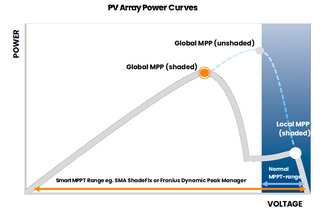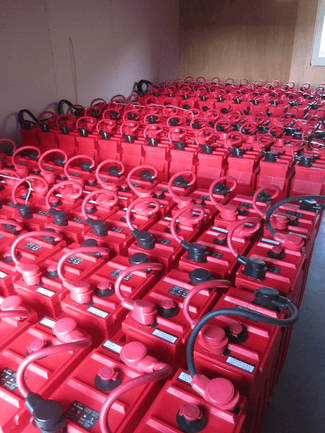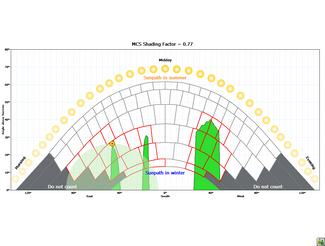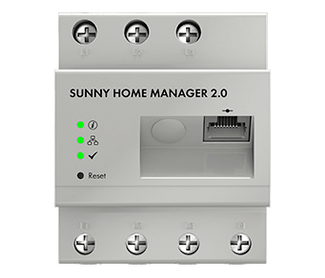The limiting factors for a grid connected solar PV system are usually the maximum available sunny area for the siting of a PV array combined with the budget available!
Since all energy can be used with any surplus going to the grid if necessary, and all needs met (any shortfall coming from the grid as required) sizing based on critical load patterns is not essential. Instead, comparison of potential energy generation (kWh) can be made with energy usage as found on your electricity bill (1 unit = 1 kWh). Greatest benefits of solar generation will be to offset electricity used during the day.
- In common with off-grid systems, energy conservation and efficiency is a pre-requisite step to obtaining energy self-sufficiency. Once electricity requirements have been reduced through efficiency, it is much easier (and cheaper) to meet those requirements through on-site PV generation.
- 8 m² allows ~ 1kWp (Kilowatts peak) of PV system.
- For most of the UK there are on average approx. 4-5 peak sun hours in summer going down to an average of 1 hour in winter.
- For well sited grid connected PV arrays - 1kWp will produce ~ 800kWh (units) per year.
- Installed cost for 3-4kWp PV system is approx. £4-5,000.00.
- If mounting a PV array on a roof then the first step is to determine how many and which type of PV module fits into the available roof space.
It is important to avoid any areas that are shaded by obstructions such as chimneys, other parts of the building or trees & aerials. (at any time of the year).
A margin should be allowed around the PV array to reduce wind loadings and to enable access. Once the PV array area has been determined, then the number of modules is matched to inverters and mounting frame dimensions, to decide upon the most cost effective and efficient system.
A professional solar installer must undertake the installation and can advise with all the following:
Grid Constraints
Only certain sizes of PV installation are permitted without prior permission from the local electricity grid operator (DNO)
For any single premises this allows connection of a Power Generating Module - which is the PV or Battery inverter (or the aggregation of modules if there are more than one) with a capacity of 16A per phase or less, and with connection at low voltage - In other words:
- Single Phase—generation capacity of 3.68kW or smaller and connected at 230V
- Three phase—generation capacity of 11.04kW or smaller and connected at 400V
- The inverters used must have G98 certification.
Above these size limits and for multiple properties then guidance and permission must first be obtained from the DNO.
- In this case inverters used must have G99 certification.
A professional solar installer must undertake the installation and can advise with this
Planning Permission
In England and Wales there are permitted development rights for roof mounted solar PV installations, such that they are permitted unless:
- installed on any part of the external walls of the building if the building contains a flat
- panels when installed on a flat roof are situated within 1 metre from the edge of the roof or protrude more than 1 metre above the plane of the roof
- panels when installed project higher than the highest point of the roof (excluding the chimney)
- the building is within a conservation area or World Heritage Site and the solar PV or solar thermal equipment is
- installed on a roof which forms the front of the building and is visible form the road.
In Scotland, planning permission is not required for most home solar electricity systems, as long as they’re below a certain size - but you should check with your local planning officer, especially if your home is a listed building, or in a conservation area or World Heritage Site.
Expected Performance

Performance can vary according to geographical area and orientation. In order to estimate approximate yearly output:
- Find the peak power (kWp) of the array to be installed,
- Identify your location on the solar radiation map and it’s annual energy production (kWh/kWp).
- Identify the Correction Factor for required orientation from the table below.
Total Annual Energy Production = (1) x (2) x (3)
Approx. annual energy production in kWh for a 1kWp PV system. South facing, unshaded & 35º tilt


A useful tool for estimating monthly output using sunlight data for anywhere in Europe and Africa is available here.




